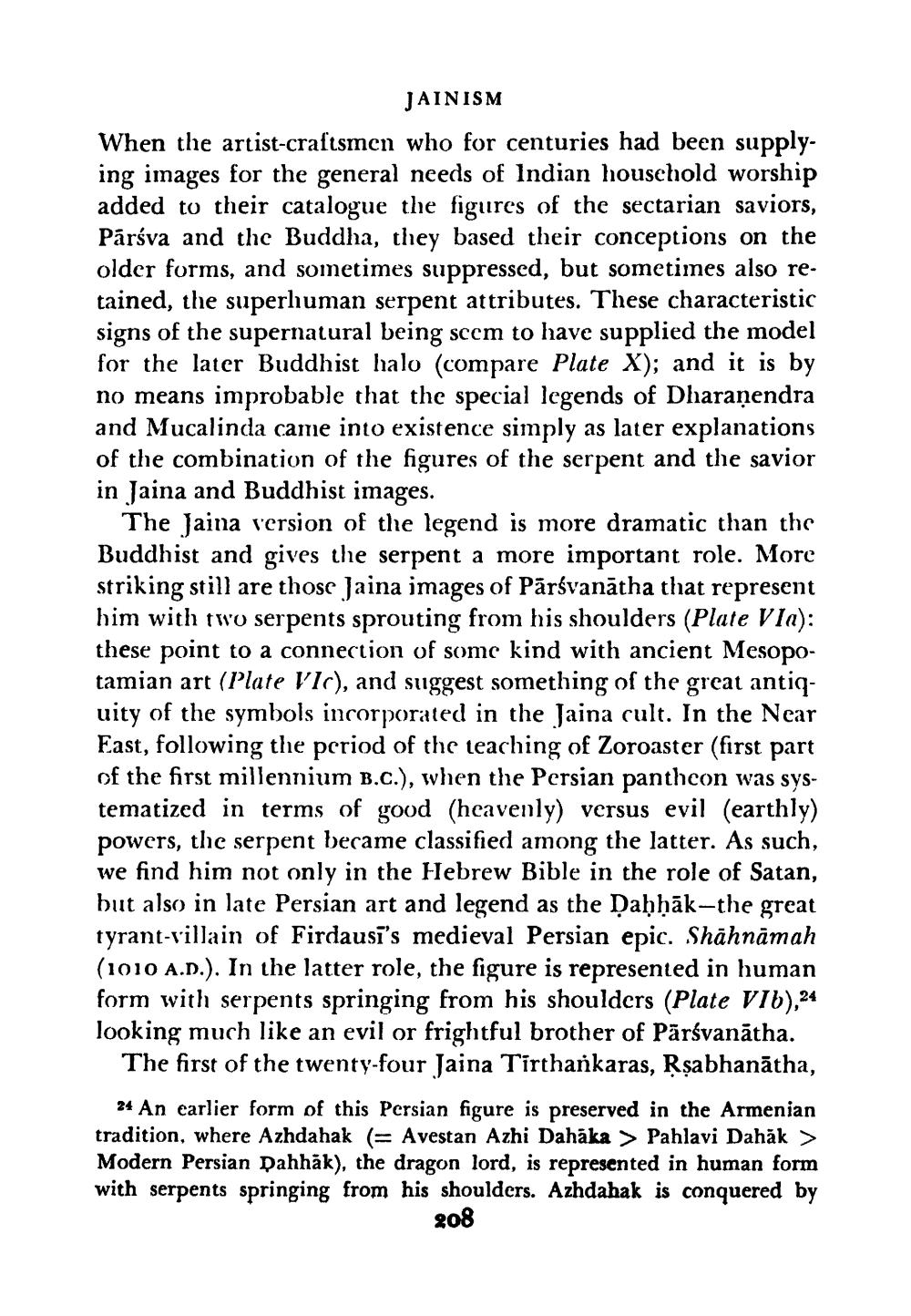________________
JAINISM
When the artist-craftsmen who for centuries had been supplying images for the general needs of Indian household worship added to their catalogue the figures of the sectarian saviors, Parsva and the Buddha, they based their conceptions on the older forms, and sometimes suppressed, but sometimes also retained, the superhuman serpent attributes. These characteristic signs of the supernatural being seem to have supplied the model for the later Buddhist halo (compare Plate X); and it is by no means improbable that the special legends of Dharanendra and Mucalinda came into existence simply as later explanations of the combination of the figures of the serpent and the savior in Jaina and Buddhist images.
The Jaina version of the legend is more dramatic than the Buddhist and gives the serpent a more important role. More striking still are those Jaina images of Pārsvanatha that represent him with two serpents sprouting from his shoulders (Plate VIa): these point to a connection of some kind with ancient Mesopotamian art (Plate V'Ic), and suggest something of the great antiquity of the symbols incorporated in the Jaina cult. In the Near East, following the period of the teaching of Zoroaster (first part of the first millennium B.C.), when the Persian pantheon was systematized in terms of good (heavenly) versus evil (earthly) powers, the serpent became classified among the latter. As such, we find him not only in the Hebrew Bible in the role of Satan, but also in late Persian art and legend as the Daḥḥāk-the great tyrant-villain of Firdausī's medieval Persian epic. Shāhnāmah (1010 A.D.). In the latter role, the figure is represented in human form with serpents springing from his shoulders (Plate VIb),24 looking much like an evil or frightful brother of Pārsvanatha. The first of the twenty-four Jaina Tirthankaras, Rṣabhanatha,
24 An earlier form of this Persian figure is preserved in the Armenian tradition, where Azhdahak (= Avestan Azhi Dahāka > Pahlavi Dahāk > Modern Persian Dahhāk), the dragon lord, is represented in human form with serpents springing from his shoulders. Azhdahak is conquered by
208




